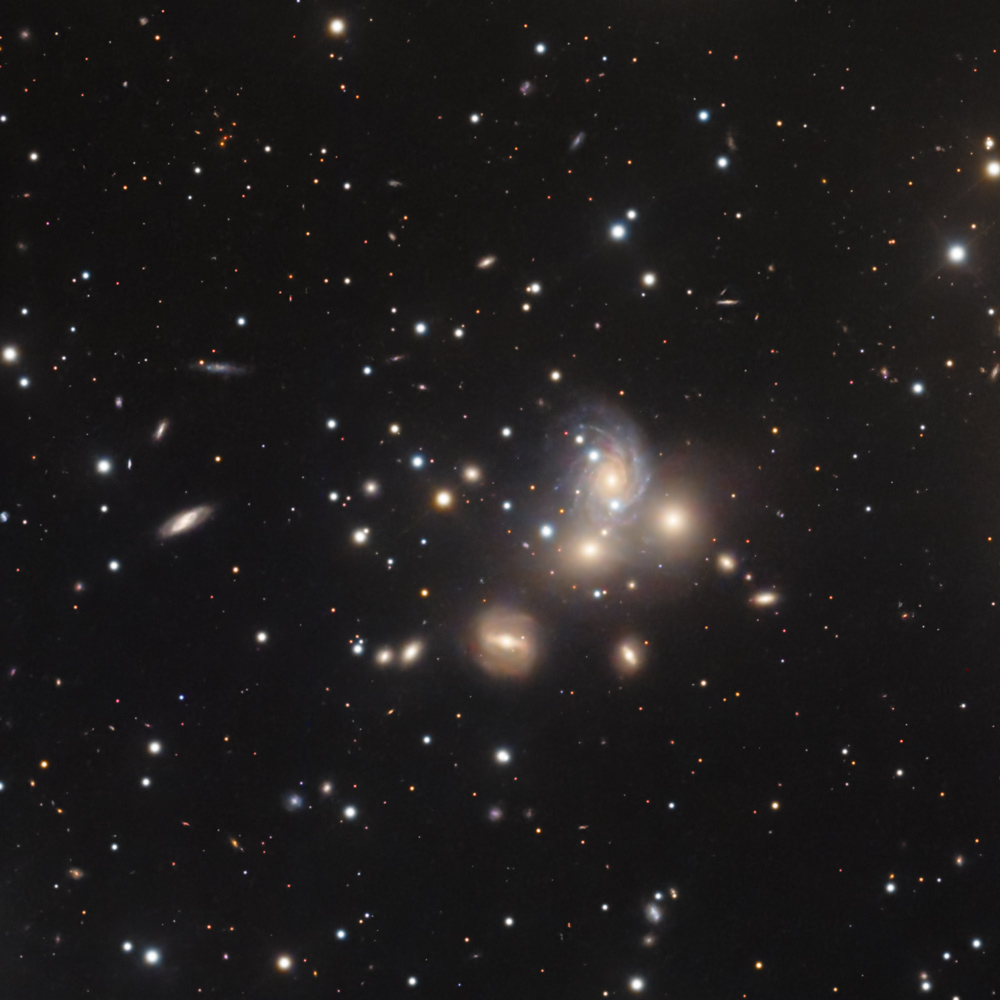
The NGC 70 Compact Galaxy Group is a compact group of galaxies (the eight NGC objects packed near the center of the image--but caveat whather NGC 68 is really part of the group, as
discussed below), visually located in the constellation Andromeda. It is about 300 million light years from us. The many galaxies in the image (essentially, all the objects not obviously
stars, either because they're elongated, or too fuzzy) not quite close to the center group are just other galaxies captured by my camera, and are not part of the
group; there are a lot of galaxies in this universe!
For ease of reference, I have included a version of the image with many (but certainly not all) of the galaxies labeled; click on the image to toggle between the two versions.
NGC 68 has a different red shift than the others in the compact group at the center of the image, and isn't misshapen by gravitational forces among the galaxies; so it is thought that that galaxy likely
is not part of the group, but merely in our line of sight.
This galaxy group bears a strong resemblance to the more-famousStephan's Quintet.
The entire field of the photo is about the same width as a full moon.
Copyright 2023, 2024 Mark de Regt